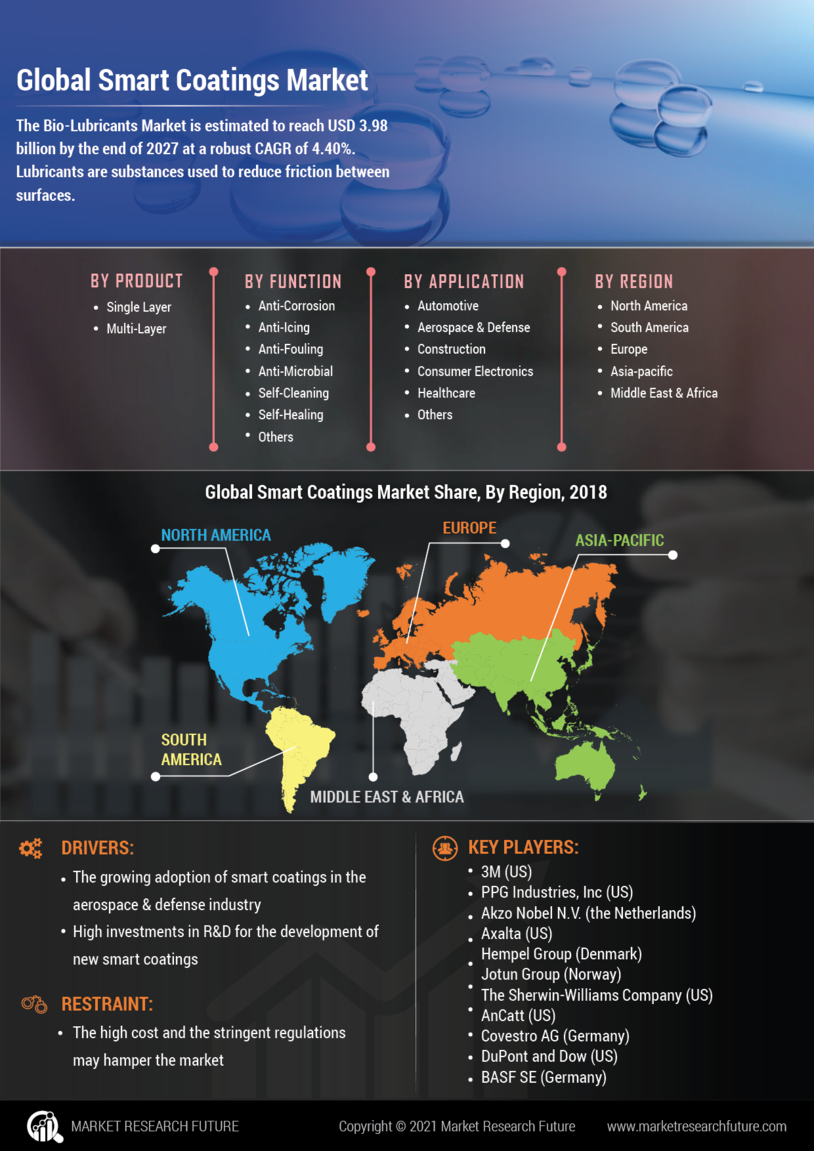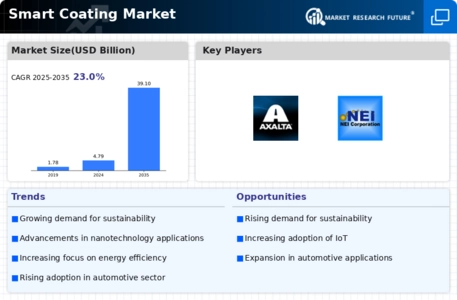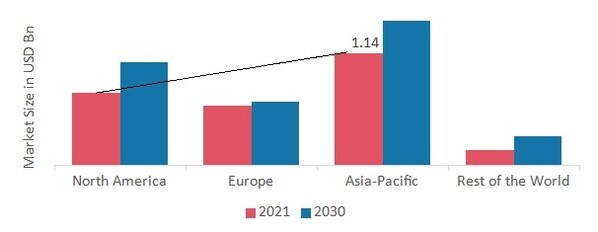Market Growth Projections
The Global Smart Coating Market Industry is poised for remarkable growth, with projections indicating a rise from 4.79 USD Billion in 2024 to an impressive 39.1 USD Billion by 2035. This growth trajectory reflects a compound annual growth rate (CAGR) of 21.03% from 2025 to 2035, underscoring the increasing adoption of smart coatings across diverse applications. The market's expansion is driven by factors such as technological advancements, regulatory support, and a growing focus on sustainability. As industries continue to seek innovative solutions, the smart coating market is likely to flourish in the coming years.
Increasing Regulatory Support
The Global Smart Coating Market Industry benefits from increasing regulatory support aimed at promoting environmentally friendly technologies. Governments worldwide are implementing stringent regulations to reduce emissions and enhance sustainability, which encourages the adoption of smart coatings. For instance, policies that mandate the use of low-VOC (volatile organic compounds) coatings in construction projects are driving demand. This regulatory landscape is likely to foster innovation and investment in smart coating technologies, thereby supporting market growth. As a result, the industry is poised for significant expansion, with a projected CAGR of 21.03% from 2025 to 2035.
Advancements in Nanotechnology
Advancements in nanotechnology significantly contribute to the growth of the Global Smart Coating Market Industry. The incorporation of nanomaterials enhances the properties of coatings, such as durability, self-cleaning, and anti-corrosion capabilities. For example, nanostructured coatings are increasingly used in aerospace and marine applications, where performance and longevity are critical. This technological evolution not only improves product performance but also expands the range of applications for smart coatings. As the industry evolves, the market is expected to grow substantially, with projections indicating a rise to 39.1 USD Billion by 2035.
Rising Demand for Energy Efficiency
The Global Smart Coating Market Industry experiences a notable surge in demand driven by the increasing emphasis on energy efficiency across various sectors. Smart coatings, which can regulate temperature and reduce energy consumption, are becoming essential in construction and automotive industries. For instance, energy-efficient buildings utilizing smart coatings can achieve up to 30 percent energy savings. As the market is projected to reach 4.79 USD Billion in 2024, this trend indicates a growing awareness of sustainability and energy conservation, further propelling the adoption of smart coatings globally.
Growing Applications in Various Industries
The Global Smart Coating Market Industry is witnessing a diversification of applications across various sectors, including automotive, aerospace, and healthcare. Smart coatings are utilized for their unique properties, such as anti-fogging, anti-microbial, and self-healing capabilities. For example, in the healthcare sector, smart coatings are applied to medical devices to prevent infections. This broadening of applications not only enhances market potential but also attracts investments from different industries. As the market evolves, the increasing versatility of smart coatings is likely to contribute to its robust growth trajectory.
Emerging Trends in Smart Coating Technologies
Emerging trends in smart coating technologies are shaping the future of the Global Smart Coating Market Industry. Innovations such as smart sensors integrated into coatings allow for real-time monitoring of environmental conditions and surface integrity. These advancements enable proactive maintenance and enhance the longevity of coated surfaces. Industries are increasingly adopting these technologies to improve operational efficiency and reduce costs. As the market continues to innovate, the integration of smart technologies into coatings is expected to drive substantial growth, aligning with the projected increase to 39.1 USD Billion by 2035.


 Source: Secondary Research, Primary Research, Market Research Future Database and Analyst Review
Source: Secondary Research, Primary Research, Market Research Future Database and Analyst Review
